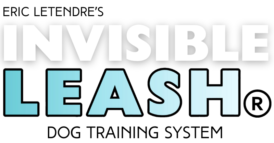 Came across a video on The Huffington Post on dog training.
Came across a video on The Huffington Post on dog training.
Disciplining your dog specifically.
The video was an interview by “That Girl” (I bet many reading this have never even heard of that TV show) and a popular Animal Planet trainer.
It caught my attention because it was on discipline. I wondered what was going to be said.
Actually, I knew what they were going to say but I watched anyway.
The popular trainer went to say that discipline and yelling at the dog is bad, that she loves dogs and then the ole scientifically proven quotes came out. Here is what she said on the video:
“Because scientifically it’s been proven that the most effective approach to teaching animals is a positive approach that’s about getting control of the things you know your dog wants. Food, toys your attention, being taken outside for a walk and using those things as leverage as a way of having a bargaining chip with your dog to say if you do what I want for example, sit at the front door I’ll use my hand to open the door and we’ll start a walk. It’s all about motivating you (the dog) to do the things I want by giving the things I know you want.”
I know I have been harping on how the subject of negative consequence but I have good reasons. Training should be positive. I use positive consequences all the time. I use PR to get a behavior to happen. BUT YOU CAN’T USE IT TO STOP BEHAVIORS….and the video I mentioned confuses the subject for dog owners looking for solutions.
I always think of the person that has a dog that is driving them crazy by knocking the garbage over, stealing food off the counters, chewing up the kid’s school knapsacks and impossible to walk because you’ll need rotator cuff surgery after a walk around the block.
I can assure you, the dog like that does NOT need to hear someone talking about using “bargaining chips.” The dog above is getting close to being brought to a shelter, dying in a vet’s office or abandoned.
The frustrated dog owner hops on the internet, goes to a respected source (The Huffington Post), listens to a trainer with impressive TeeVee credentials (Animal Planet) and learns that she should be using positive reinforcement.
The dog training world has gone “positive reinforcement” crazy. And what most dog owners need nowadays is NOT some TeeVee trainer, not some egghead talking about scientific training methods. What they need is a trainer with some street cred.
A trainer like……
……me!
Haha! Let me splain.
The positive reinforcement crazy crowd talks about “scientific training” and then ignores the very model for all behavior. They ignore the four behavior quadrants and tell everyone to use just one: positive reinforcement.
The definition of positive reinforcement: Positive reinforcement is the addition of a reward following a desired behavior.
How can we use this to STOP the dog from stealing food off the counter? How do we use positive reinforcement to get the dog to leave the kid’s school knapsacks alone? You can’t!
Maybe we need to discuss negative consequences. Here is the definition of punishment:
Presenting a negative consequence after an undesired behavior is exhibited, making the behavior less likely to happen in the future.
HOT DAMN!
Doesn’t that sound like it would be a better course of action? Can we talk about STOPPING the undesirable behaviors instead of bargaining chips and rewarding behaviors that you can’t reward?
Can you see why so many dog owners are confused and frustrated? The very people that are supposed to help them will not (or can’t) give them the correct information they need to train their dog.
Unethical.
But, luckily you tune in here everyday because I am the one guy that can show you how to use negative consequences to STOP bad behaviors. I am the guy that will show you that training is about using both positive and negative consequences and that when you use a combination you can have a very stable, happy dog that listens to you.
And because I want to help as many people as possible you can become a member of the Dog Training Inner Circle for just $1.00!
You can get started today. Here’s where to go NEXT:
Best,
Eric
